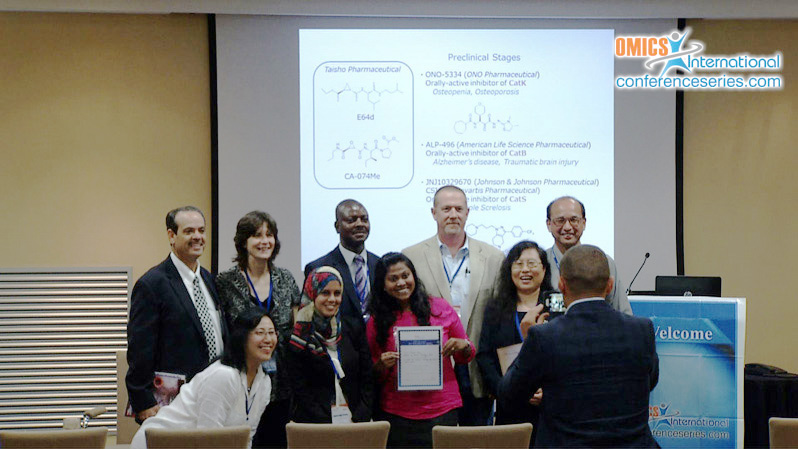
Harish C. Pant
National Institute of Health, USA
Title: A novel approach to prevent neurodegeneration; Neuronal cytoskeleton regulation and deregulation by phosphorylation
Biography
Biography: Harish C. Pant
Abstract
Biological processes are tightly regulated under physiological conditions. Neurobiology occurs upon deregulation of these tightly regulated processes. The Biology of neurodegeneration program evolved in our laboratory studying the basic biology of neuronal cytoskeletal protein phosphorylation regulation during development and normal function in the adult. To understand the molecular basis of neurodegeneration our major focus has been to study the regulation of compartment-specific patterns of cytoskeletal protein phosphorylation in neuronal perikarya (neuronal cell body), axons and dendritic processes. During our studies on the compartment specific phosphorylation of cytoskeletal proteins in the neurons, we discovered a novel kinase, Cdk5, a Cell Cycle dependent like kinase in the brain. Though it binds with cyclins, however, its activity is primarily restricted to neurons due to its binding and regulation by neuron specific proteins p35kDa and p39kDa. Cdk5. By virtue of its tight regulation, multifunctional role in neuronal development, migration, synaptogenesis and survival Cdk5 targets a large number of different types of neuronal processes and has emerged as a major player in nervous system function in health and disease. We have demonstrated that phosphorylation of the numerous acceptor sites on neuronal intermediate filament proteins (NIFPs) as neurofilaments (NFs) and Tau is tightly regulated topographically and generally confined to the axonal compartment. It was recognized that in neurodegenerative disorders such as Alzheimer’s disease (AD) and Amyotrophic lateral sclerosis (ALS), the pathology was characterized by an accumulation of aberrantly and hyper- phosphorylated cytoskeletal proteins in cell bodies, suggesting that topographic regulation had been compromised. Our studies of neurodegeneration in cell culture and model mice with emphasis on a specific neuronal protein kinases, (Cdk5), that targets numerous neuronal proteins including cytoskeletal proteins, which when deregulated, may be responsible for the pathology seen in neurodegeneration. In cell systems, neuronal stress leads to deregulation of Cdk5, accompanied by abnormal cytoskeletal protein phosphorylation and cell death characteristic of neurodegeneration. Recently we have developed peptides derived from, p35, a neuron specific activator of Cdk5, for deregulated Cdk5 activity which rescue cells in vitro from this stress induced pathology and in vivo, in AD, ALS and PD model mice. We have investigated (1) how cytoskeletal protein phosphorylation is topographically and tightly deregulated in neurons? (2) What factors are responsible for this deregulation? (3) And treated mouse models of AD, ALS and PD therapeutically with a small peptide, p5, (24 amino acid) derived from Cdk5 activator protein, p35, that specifically inhibit deregulated Cdk5 (Cdk5/p25) but not the physiological Cdk5 (Cdk5/p35) required for nervous system function. Currently, most therapeutic approaches targeting the deregulated Cdk5 and other kinases in neurodegenerative disorders have focused primarily on drugs like roscovitine that inhibit Cdk5 activity by interfering with the ATP binding domain of the kinases. These drugs, however, lack sufficient specificity, since all the kinases including cell cycle Cdks, are vulnerable at the ATP binding site targeted by these drug molecules. P5 is non-toxic, thus is most suitable therapeutic reagent for AD and other neurodegenerative diseases.


